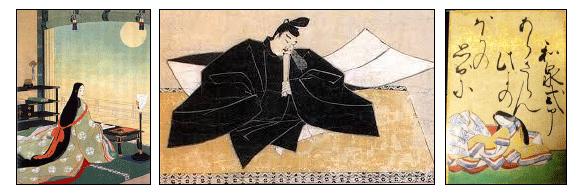Greetings, Japanese phonetic compounds
Aim: How do I greet someone in Japanese?
New Vocabulary:
Japanese | Romaji | English |
おはようございます | ohayo gozaimasu | Good morning |
こんにちは | konnichiwa | Good afternoon |
こんばんは | konbanwa | Good evening |
おやすみなさい | oyasuminasai | Good night |
おひさしぶりです | ohisashiburi desu | Long time no see |
おげんきですか? | ogenki desu ka? | How are you? |
とても | totemo | very |
げんきです | genki desu | health is well |
だいじょうぶ | daijo-bu | alright |
あたま | atama | head |
すこし | sukoshi | a little |
いたいです | itai desu | to hurt |
はい | hai | yes |
いいえ | iie | no |
どうしましたか? | do-shimashitaka? | What happened? |
Lesson Point:
1. The honoring “お”: There are certain words that are considered worthy of honor in the Japanese language. One of the ways in which words are made honorable is they are preceded by “お”. So when you are referring to someone other people’s condition or other people in general “お” is added to certain words to make them polite. You do not add “お” when you are talking about yourself. Another example is when you ask someone’s name – we have covered the word name before – you ask “あなたのおなまえは? – your name?”, but when you are mentioning your name, you say “わたしのなまえは…です – my name is ….” eliminating “お”. Another example is when you are saying “How are you?” to someone in a formal sense. You will normally say “おげんきですか?” Note that the お was added. However when you reply to the question “How are you” you would say “げんきです”, because you are referring to yourself.
2. The Particle Wa: For こんにちは、こんばんは, or for subject + wa form that we’ve introduced earlier for example “watashi wa”, “anata wa”, “kare wa”, and “kanojo wa”, the hiragana” は” is used at the end of each word, but is pronounced “wa” instead of “ha”.
Sample Dialogue:
Ricardo & Yamada san in the morning
Y: リカルドさん、おはようございます。(Good morning, Ricardo.)
Ricardo san, ohayo-gozaimasu
R: やまださん、おはようございます。(Good morning, Mr. Yamada.)
Yamada san, ohayo-gozaimasu
Y: おひさしぶりです。(Long time no see.)
Ohisashiburi desu
R: おげんきですか?(How are you?)
Ogenki desu ka?
Y: はい、げんきです。リカルドさんは?(Yes, I am well. How about you, Ricardo san?) Hai, genki desu. Rikardo san wa?
R: げんきです。(I am well.)
Genki desu.
Enrique and Yamada san in the evening
Y: エンリケさん、こんばんは。(Good evening, Enrique.)
Enrique san, konbanwa.
E: やまださん、こんばんは。おげんきですか?(Good evening, Yamada san. How are you?)
Yamada san, konbanwa. Ogenki desu ka?
Y: ぼくはげんきです。エンリケさんだいじょうぶですか?(I am well. Are you alright, Enrique?)
Watashiwa genki desu. Enrique san daijo-bu desu ka?
E: いいえ。(No)
iie
Y: どうしましたか?(What’s the matter?)
Do shimashita ka?
E: あたまがすこしいたいです。(I have a little headache/my head hurts a little)
Atama ga sukoshi itai desu.
| S-11-1 |
II. Mini-Quiz – (Test Your Knowledge):
Hey it’s your turn. See if you can answer やまださんon your own then check your answers above. Use Hiragana. You can do it!
Y: リカルドさん、おはようございます。(Good morning, Ricardo.)
Rikardo san, ohayo-gozaimasu
R: _________________________________________________________________。
(Good morning, Mr. Yamada.)
Y: おひさしぶりです。(Long time no see.)
Ohisashiburi desu
R: _____________________________________________________________________?(How are you?)
Y: はい、げんきです。リカルドさんは?(Yes, I am well. How about you, Ricardo san?)
Hai, genki desu. Rikardo san wa?
R: __________________________________________________________________。
Genki desu.
III. Writing Practice: Hiragana Compounds
Lesson Point:
1. What is a Japanese Compound?: A Japanese compound is a combination of kana (Japanese phonetic sounds) to produce a specific sound. Here are some examples: Kya, Kyu, Kyo, Gya, Gyu, Gyo, Pya, Pyu, Pyo, etc. The chart below shows all of the different compounds written in hiragana. In order to explain how these compounds are written let’s closely look at the compound “Kyo” below.
Writing a compound: When you write a compound in Japanese, the primary sound is written first. So in the case of Kyo the “き” is written first because it is the first sound. The second sound yo follows the first sound and is usually written smaller than the first sound Like this: “ きょ”.
Extending a compound: Japanese compound sounds can be short like the example above or long. As you become more familiar with Japanese words, you will begin to see all the different ways compound sounds are written and extended. For now, let’s take a look at how the compound “ きょ” is extended in the word for study: “benkyou” or “べんきょう”. In this case, the word is extended by adding an うon the end. Basically, adding うon the end will extend the sound of the vowel. Here’s some other examples: おはよう(Good morning - informal)、ぎゅうにゅう(Milk)
Hiragana Compound Chart:

Practice writing the following words in Hiragana
1. Textbook – Kyoukasho - ____________________________
2. Shot / Vaccination - Chuusha - ________________________
3. Tea - Ocha - ________________________
4. Milk – Gyuu Nyuu - __________________________
5. Customer / Guest - Okyakusan - ___________________________
6. Saving …. – Chokinbako - _________________________________
7. Travel – Ryokou - ________________________________________
